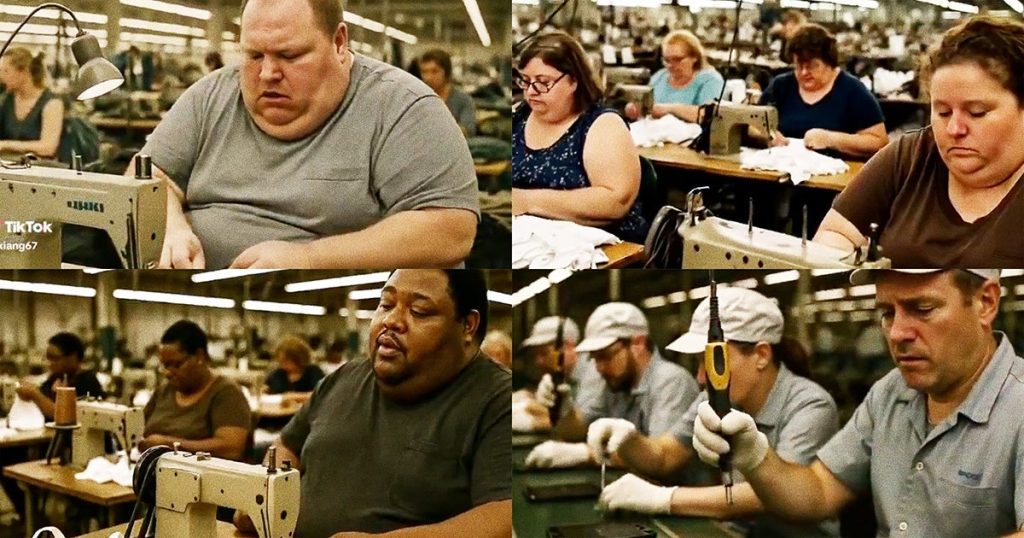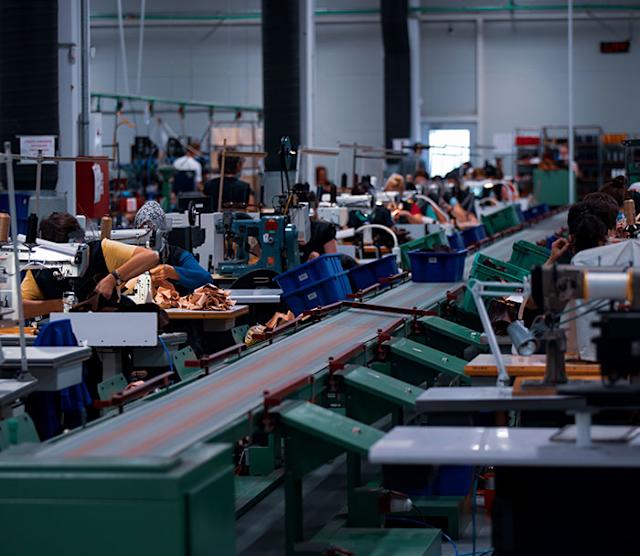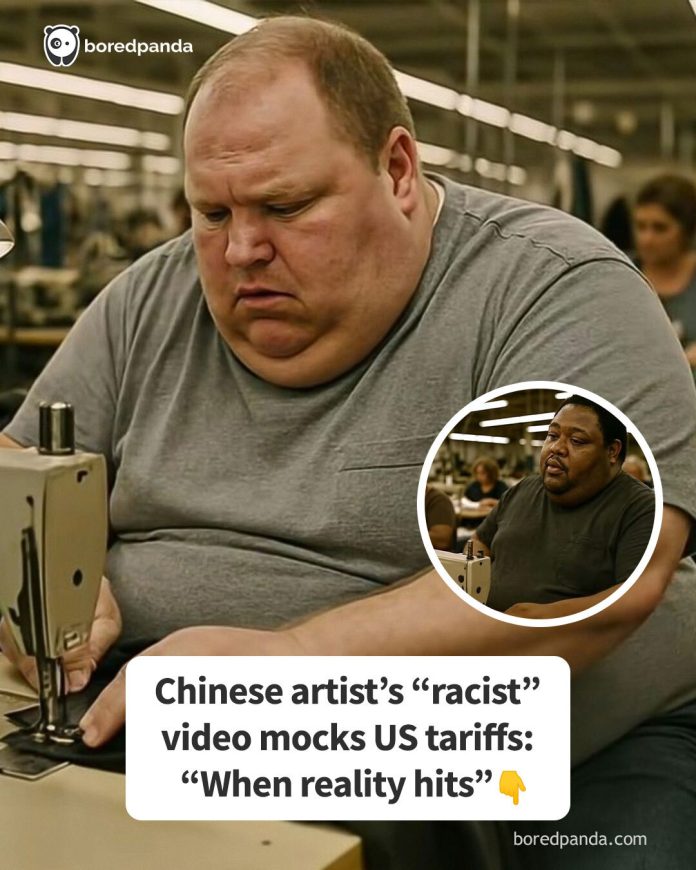In recent developments, an AI-generated video has surfaced, sparking widespread discussion and controversy. The video portrays American workers in factory settings, seemingly mocking the U.S. labor force amid escalating trade tensions between the United States and China. This satirical piece has garnered significant attention on various social media platforms, leading to a flurry of reactions and debates.
Content and Depiction
The video in question depicts overweight, middle-aged American workers engaged in low-skilled labor within factory environments. Set against the backdrop of traditional Chinese music, the workers appear exhausted and disheartened as they operate sewing machines and assemble electronic devices. The clip concludes with the phrase “Make America Great Again,” a slogan popularized during President Trump’s campaign. This portrayal seemingly critiques the U.S. administration’s efforts to revitalize domestic manufacturing through the implementation of tariffs on Chinese goods.

Social Media Circulation
Initially shared by TikTok user Ben Lau, the 32-second clip rapidly gained traction, amassing over 30,000 likes and more than 600,000 views shortly after its release. The video’s reach extended further when it was reposted on X (formerly known as Twitter) by user Damon Chen, where it garnered over 6 million views. The widespread dissemination of the video has ignited extensive discussions regarding its implications and the underlying message it conveys.
Public Reactions
The video’s content has elicited a spectrum of responses from viewers. Some individuals find the parody humorous, interpreting it as a satirical take on current economic policies. Conversely, others perceive it as offensive and derogatory, arguing that it unfairly stereotypes American workers and undermines the dignity of labor. For instance, one user shared a personal anecdote, stating, “My mom worked in a sewing factory for 15 years, she raised us after dad left, stayed off welfare & kept food on the table & a roof over our heads. It was a good job, thankful she had it.” This sentiment reflects a broader concern that the video dismisses the value and necessity of manufacturing jobs that have historically supported many American families.
Context of U.S.-China Trade Relations
The emergence of this video coincides with heightened trade tensions between the United States and China. The U.S. administration recently imposed a 104% tariff on … imports, a move aimed at encouraging domestic production and reducing reliance on foreign goods. In retaliation, China announced a 34% tariff on American goods, further escalating the trade dispute. These reciprocal measures have sparked debates about their potential impact on global markets and the economies of both nations.
Chinese State Media’s Involvement
In addition to user-generated content like the aforementioned video, Chinese state media outlets have also engaged in the discourse surrounding the trade war. For example, CGTN released a music video titled “Look What You Taxed Us Through,” featuring AI-generated vocals that criticize the U.S. tariffs from the perspective of American consumers. The lyrics highlight concerns about rising consumer costs and economic hardships resulting from the tariffs. Similarly, New China TV premiered a sci-fi short film named “T.A.R.I.F.F.,” depicting a robot enacting aggressive tariffs under the directive of a U.S. official, ultimately leading to economic disruption and self-destruction. These productions underscore China’s opposition to the U.S. tariff policies and aim to highlight their perceived detrimental effects.

Cultural and Political Implications
The use of AI-generated media to comment on international trade policies reflects a novel intersection of technology, culture, and politics. Such content serves as a form of digital propaganda, leveraging modern tools to influence public perception and international discourse. The video’s portrayal of American workers has raised questions about cultural stereotypes and the ethical considerations of using AI in this context. Furthermore, it highlights the role of social media as a battleground for soft power, where nations and individuals alike can disseminate content that shapes narratives and public opinion on a global scale.
Conclusion
The AI-generated video mocking American factory workers serves as a poignant example of how digital media is being utilized to comment on and influence perceptions of international economic policies. Its widespread circulation and the diverse reactions it has elicited underscore the complex dynamics of the U.S.-China trade relationship and the broader implications of using technology in political and cultural discourse. As the trade tensions continue to evolve, such media artifacts will likely persist as tools for commentary, critique, and propaganda in the digital age.

















